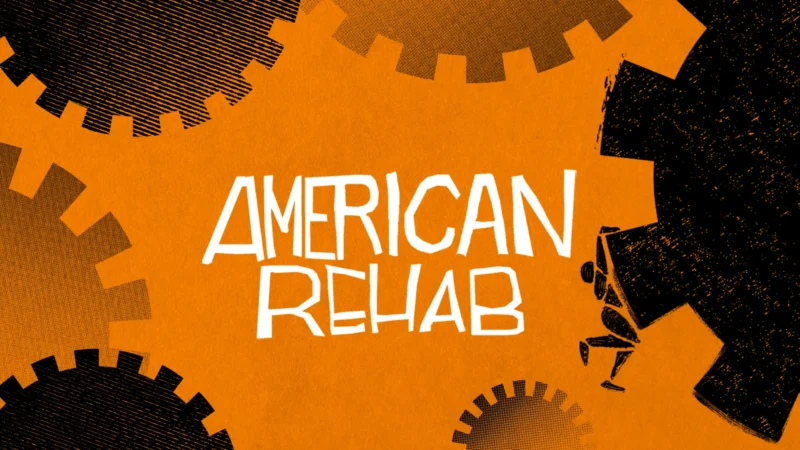Alcohol addiction treatment in 2025 is more advanced, regulated, and transparent than ever before, but the costs are still significant. The average price for a 30-day alcohol rehab program ranges from $6,000 to $30,000, depending on the facility type, length of stay, and medical complexity. Outpatient options cost between $1,500 and $10,000.
Those figures may look steep, but they reflect the cost of a comprehensive medical service, not a hotel stay. To truly understand what you’re paying for, you need to look at what modern rehab actually includes.
The Real Numbers in 2025

By 2025, the U.S. rehab industry will have matured into a tiered system. There are nonprofit centers funded through state programs, standard private facilities covered by insurance, and luxury retreats catering to executives and high-profile clients. On average:
| Program Type | 2025 Average Cost | What’s Included |
| Inpatient (Residential) | $6,000–$30,000 / 30 days | Room, meals, 24/7 care, detox, therapy, aftercare planning |
| Outpatient (IOP/PHP) | $1,500–$10,000 / month | Therapy 3–5 days a week, medical supervision, medication support |
| Medical Detox (Standalone) | $2,000–$4,000 / week | Withdrawal stabilization, medication, and nursing staff |
| Luxury / Executive Rehab | $35,000–$80,000+ / month | Private suites, gourmet dining, holistic therapy, premium privacy |
Most patients pay a fraction of that after insurance reimbursement, but deductibles and co-pays can still add up to several thousand dollars. The U.S. Department of Health now mandates cost transparency for addiction facilities, so you can request itemized pricing before admission.
What’s Behind the Price Tag
Each rehab program price reflects several cost layers, including medical staff, clinical care, and facilities. Here’s a realistic breakdown:
- Medical detox and stabilization: For chronic drinkers, detox often lasts 5–7 days. This requires continuous monitoring to manage withdrawal safely. Benzodiazepines, fluids, and sometimes anticonvulsants are used to prevent complications.
- Individual therapy: One-on-one counseling sessions form the backbone of recovery. Certified addiction specialists and licensed therapists charge between $150 and $250 per hour.
- Group therapy and workshops: Daily group sessions help patients rebuild social accountability and coping mechanisms.
- Dual-diagnosis treatment: Over 50% of patients in 2025 also have anxiety, depression, or PTSD. Addressing both addiction and mental health increases cost but dramatically improves recovery outcomes.
- Aftercare coordination: Rehab doesn’t end at discharge. Facilities now integrate sober-living networks and telehealth check-ins for at least three months post-treatment.
Each of these components is a line item in the final bill, but they also represent necessary care, not add-ons.
The Modern Cost Structure and Transparency

So how much rehab costs? In the past, pricing for rehab was vague and inconsistent. In 2025, providers are required by law to publish their treatment structure and full financial breakdown. This has reduced billing surprises and helped patients make informed choices.
Still, hidden costs exist. Medication-assisted treatments, such as naltrexone injections, can cost an extra $1,000 monthly. Some centers charge for lab tests, psychiatric evaluations, or family therapy. Travel and time off work are additional indirect expenses.
To plan properly, check with your insurer and the facility about what’s covered. The Affordable Care Act still classifies substance use disorder treatment as an essential health benefit, so coverage is mandatory, though benefits vary by plan.
What Insurance Covers in 2025
The majority of U.S. insurance carriers, Aetna, Blue Cross Blue Shield, UnitedHealthcare, and Cigna, cover at least 50% of medically necessary rehab costs. Medicaid and Medicare cover basic outpatient and detox programs, but rarely residential stays at private centers.
| Coverage Type | Typical Coverage (2025) | Patient Responsibility |
| Private Insurance (PPO/HMO) | 50–80% the total cost | Deductible + co-pay, typically $2,000–$5,000 |
| Medicare / Medicaid | 100% for approved outpatient and detox programs | Limited providers must meet criteria |
| Self-Pay Plans | Full cost upfront or monthly installments | Some centers offer 0% financing |
| Scholarships / Nonprofit Programs | 50–100% subsidy | Waitlist possible; strict eligibility |
Many centers have added income-based sliding scales for uninsured patients, making private treatment more accessible than it was even five years ago.
What You’re Really Paying For
A 30-day stay may sound brief, but it’s highly structured and resource-intensive. Patients typically go through the following daily framework:
| Phase | Description | Duration |
| Medical Detox | Withdrawal management under medical supervision | 5–7 days |
| Stabilization | Mental health assessment, nutrition, and sleep recovery | 3–5 days |
| Core Therapy | CBT, DBT, EMDR, or trauma therapy | 2–3 weeks |
| Family and Social Reintegration | Counseling with relatives, relapse planning | Final week |
| Aftercare Transition | Discharge, follow-up scheduling, and telehealth | Continuous |
In short, when patients pay for rehab, they’re funding an integrated medical and psychological ecosystem,24-hour staff, customized therapy, and monitored recovery, not a single service.
The New Emphasis on Outcomes

Rehab in 2025 has shifted away from luxury marketing and toward measurable results. Programs are now evaluated based on post-treatment sobriety rates, patient satisfaction, and relapse statistics tracked at 3-, 6-, and 12-month intervals. Centers that include extended aftercare, weekly teletherapy, or peer coaching report up to 35% higher long-term success rates.
Some even offer “continuing care guarantees,” allowing former patients to return for booster sessions at reduced cost if relapse occurs within a set timeframe. That model, increasingly common in 2025, provides value beyond the initial program fee.
Regional Cost Differences
Location still matters. States with dense healthcare networks, California, Florida, and New York, tend to be more expensive but offer broader insurance partnerships. Midwest and Southern facilities remain more affordable, though travel can offset savings.
| Region | Typical Monthly Cost | Key Note |
| California / Florida | $18,000–$30,000 | High-end coastal programs dominate |
| Texas / Midwest | $8,000–$16,000 | More hospital-affiliated centers |
| Northeast (NY, MA) | $10,000–$20,000 | Greater focus on dual-diagnosis |
| Rural States (ID, WY) | $4,000–$9,000 | Lower housing costs, fewer amenities |
Regional variation can be 50–100%, so if insurance covers out-of-state care, travel may be worth it for better outcomes.
Why the Price Is Justified
Untreated alcohol addiction costs far more. Between medical complications, job loss, and legal issues, the average economic impact per heavy drinker exceeds $15,000 annually, according to the CDC. Rehab costs that amount once, but can prevent those losses indefinitely.
Patients who complete structured programs have three times higher chances of remaining sober a year later compared to those who attempt detox alone. In 2025, rehab is an investment in functional recovery, not a sunk cost.
The Bottom Line

In 2025, the cost of alcohol rehab reflects real, measurable medical care. Expect to pay between $6,000 and $30,000 for inpatient and $1,500 to $10,000 for outpatient, depending on location and treatment depth. That fee covers detox, medical monitoring, therapy, and aftercare, not just room and board.
The smartest way to approach it is to focus on what’s included, not just the sticker price. Verify insurance early, compare program components, and prioritize centers that offer integrated therapy and extended follow-up.

